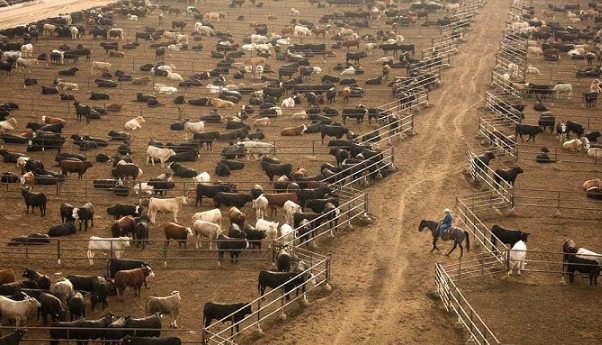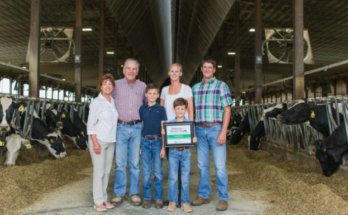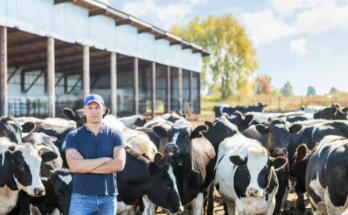Currently, in America, there are more than 700,000 cattle ranches. In particular, Texas, Nebraska, Kansas, and Oklahoma are the states with the largest number of cattle ranches in the country. In America, there are more than 70 different breeds of cattle. The most popular cattle breeds include the Beefmaster, Longhorn, Hereford, and Anguses. In which, Anguses are the most easily seen cattle breed on the grasslands of Texas.
### American Ranchers Raise 30.1 Million Beef Cattle: A Look at the Economic Success and Practices
In the United States, beef cattle farming plays a pivotal role in the agricultural economy. With over 30.1 million beef cattle raised across the country, the beef industry is a significant source of both food and income. Ranchers and farmers have developed a diverse and effective approach to managing their herds, blending traditional methods with modern innovations to meet the increasing global demand for beef. But how do these ranchers maintain profitability while ensuring sustainable practices? Much of it comes down to careful financial planning and budgeting.
### Spending and Budgeting for Success
Ranching is a capital-intensive operation. To maintain a successful beef cattle farm, ranchers must manage multiple financial considerations. These include costs for feed, labor, veterinary care, equipment, and maintenance of grazing lands. For many, access to government subsidies, such as those provided through the U.S. Department of Agriculture (USDA), plays a crucial role in covering these expenses. Farmers often must also plan for unexpected events, such as droughts or disease outbreaks, which can drastically affect their budget.
An essential part of the financial planning process is making smart investments in technology and infrastructure. For instance, many modern beef farms use automated systems for feeding and monitoring cattle health, reducing labor costs and improving efficiency. Ranchers also increasingly rely on data analytics to track herd health and predict market trends, allowing them to make informed decisions about when to sell or breed cattle. This proactive approach helps them avoid losses and maximize profits.
### Release Date of Financial Reports and Market Trends
The financial health of the beef industry is often tracked through regular reports from agricultural agencies and financial institutions. For example, the USDA releases monthly and annual reports that provide insights into cattle inventories, meat production, and market forecasts. These reports are valuable resources for ranchers, helping them stay ahead of market shifts, such as fluctuations in beef prices or changes in consumer demand. In turn, these reports inform the ranchers’ budgeting and planning efforts, guiding them in adjusting their operations to meet market conditions.
One key trend that farmers are keeping an eye on is the demand for sustainable and ethically raised beef. As consumer preferences evolve, ranchers are finding new opportunities to market their cattle to a growing base of environmentally conscious consumers. Some ranchers are even exploring grass-fed or organic beef options, which tend to fetch higher prices in the marketplace. Adapting to these consumer demands can lead to greater profitability and success in an increasingly competitive industry.
### Availability of Support for Farmers
Numerous resources are available to American ranchers to help them succeed. State and federal agricultural departments offer grants, loans, and advisory services to assist farmers in expanding their operations or improving sustainability practices. Additionally, numerous agricultural extension programs and farmer cooperatives provide valuable guidance on everything from breeding strategies to efficient water use. Websites and online platforms, like the USDA’s Agricultural Marketing Service (AMS) and the National Cattlemen’s Beef Association (NCBA), offer up-to-date information and resources tailored specifically to beef producers.
Ranchers also benefit from the support of local agricultural organizations, which advocate for policies that support the beef industry and promote fair trade practices. These organizations help farmers stay informed about regulatory changes and offer networking opportunities, so ranchers can collaborate on shared issues.
### Conclusion
The U.S. beef industry is a complex and highly efficient system, with ranchers raising 30.1 million beef cattle annually. The key to success lies in managing a well-thought-out budget, investing in technology, staying informed about market trends, and accessing available resources. By balancing these elements, ranchers can continue to thrive in an industry that is integral to the American economy.



